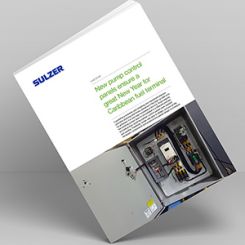The performance curves generated by many pump manufacturers are based on results obtained in their test facilities under tightly controlled conditions. The testing techniques used in the field can vary substantially and may or may not provide accurate results.
The Field Test Calculator
Last year, one of my associates asked me to develop a single field test procedure that could be used company-wide for water-pumping applications. After a little research, I found that we were using several different procedures, and although similar, the measured results could differ depending upon the system conditions. I put together several versions and received feedback from our field personnel. I also received some excellent feedback from Lee Ruiz, one of our faithful Pumps & Systems readers and commentators.
The final result is an Excel spreadsheet, Field Test Calculator (FTC), that standardizes the testing of three of our most common water pumping configurations. It is used for both startup and post-installation testing. To date, it has met or exceeded the testing requirements of our major pump manufacturers and the specifying engineering community.
We still use some special procedures for testing pumps in the chemical, petroleum and food processing industries. The design and content is not earth-shattering. Its purpose is to ensure that we use consistent methods when testing pumps. You can take advantage of this tool, or use it as a template for developing your own version. It can be downloaded from the “Pump Sizing, Selection & Testing Tools” page on www.PumpEd101.com.

Figure 1. Screen shot of the End Suction and Split-Case Tab
How It Works
The FTC is designed for three basic pumping configurations—end suction and split-case pumps, submersible well and wastewater pumps and line-shaft turbines. The first uses both suction and discharge gauge measurements, while the latter two use discharge gauge measurement only. Figure 1 is a screenshot of the end suction and split-case tab. The other tabs are similar in design but require different input based on the system design.
The gray cells are for data entry and the yellow cells are calculated results. With the exception of specific gravity, the data entered into the upper block is for reference only and is not used in the calculations. The equations to the right show how each of the results was calculated, and all the variables are defined below the equation.
Each tab allows for the testing of multiple points or one or two points multiple times. Testing multiple points will automatically plot the performance curve on Page 3 of the sheet. Page 2 is for comments, additional information and witness signatures.
The Instructions Tab includes instructions for each test procedure and explains some of the data that may or may not be required. For example, you will note that suction piping friction is included in the calculation for total discharge head (TDH). Normally, the suction gauge reading will take friction into account. However, if the gauge is located some distance from the pump's suction, the friction that arises from the gauge location to the suction must be included.
There are also instructions for modifying the equation used to compute the brake horsepower (BHP) if your measurement device is a kW meter. The default computation for BHP is average voltage and current.
If you have any feedback on changes or additions, please drop me an email.

